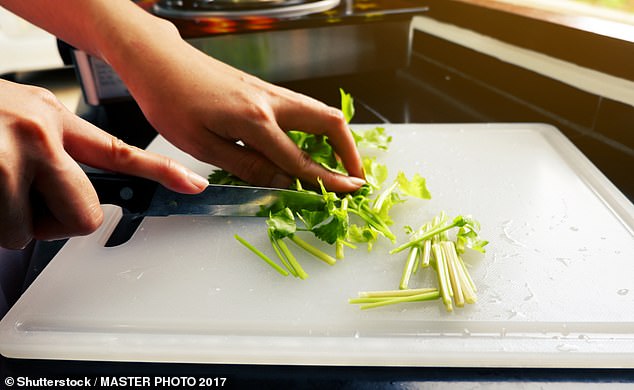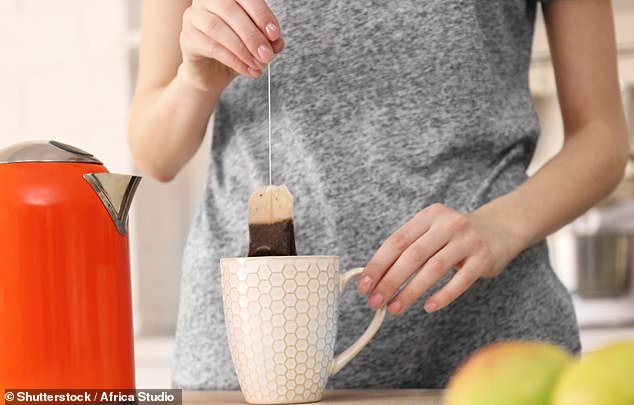The average American kitchen is filled with items that leach microplastics into food and drink, whether through plastic cutting boards or the lining of tea bags.
Microplastics, or fragments of any plastic measuring less than five millimetres in length, lurk in our oceans, air, food and even drinking water.
Humans constantly inhale and ingest them, increasing the chances of experiencing body-wide inflammation, neurological effects, DNA damage, and a weakened immune response.
Microplastics are different from PFAS, “forever chemicals” derived from plastic, which can take years to break down in the environment and in the human body. Microplastics are almost as ubiquitous as other plastics and take hundreds of years to break down in the environment.
Now, a growing body of evidence has shed light on which everyday kitchen items are most likely to contain microplastics.
Researchers in Pakistan have found that every cup of tea made with a plastic teabag releases an estimated 11.6 billion microplastics and 3.1 billion nanoplastics.

Experts also recommend using plastic-free glass or bamboo cutting boards, as plastic cutting boards also leach microplastics into food.
Globally, people consume an average of five grams of microplastic every week, depending on age and sex, studies suggest.
Many plastics are used worldwide, and more than 20 percent of them are classified by the EU as causing concern due to their persistence, accumulation in human tissues or toxicity.
Next time you make a cup of tea, keep in mind that most tea bags are made from unsustainable polypropylene plastic and are not biodegradable. In some cases, not counting tea, plastic accounts for approximately 25 percent of the tea bag.
Not only are tea bags an environmental hazard, but according to 2023 research from Dow University of Health Sciences in Pakistan, when combined with hot water, they release a flood of microplastics.
Researchers found that each cup of tea made with a plastic bag released approximately 11.6 billion microplastics and 3.1 billion nanoplastics.
Tea bags may also contain other harmful substances, including fluoride compounds, arsenic, radium salts, aluminum, copper, lead, mercury, cadmium, barium, and nitrates.
Even paper tea bags can release microplastics from the sealant used to close the bags.
Paper cups containing tea and other hot drinks also release microplastics. While they may seem like a suitable alternative to plastic and polystyrene cups, paper cups are not harmless.
The inside of the cups is lined with a sealant, typically up to 10 percent high-density polyethylene (HDPE), to insulate them and prevent leaks.
A disposable paper cup (100 ml) with a plastic liner can Leaching approximately 25,000 micrometric-sized microplastic particles in the hot liquid it contains.
Toxic heavy metals such as lead (Pb), chromium (Cr) and cadmium (Cd) have also been found in the films used in tea bags, and there are concerns that these metals may leach into hot water during brewing.
Like the plastic lining of paper cups, plastic ice cube trays can also leach microplastics into the ice.
Plastics, being resistant to water and ice, tend to float on the surface of water and ice. When the water freezes, these plastic particles Pushed off the ice Because they don’t mix well with water.
As more people become aware of the dangers of microplastics in the home, new plastic-free alternatives have emerged.
Silicone and metal ice trays are touted as a sustainable alternative to plastic trays.
Plastic food containers that are considered microwave-safe also release microplastics into the food they contain.
In 2023, a team of researchers at the University of Nebraska-Lincoln discovered that heating baby food in plastic containers in the microwave can release more than two billion nanoplastics and four million microplastics per square centimetre of packaging.
The health problems associated with consuming microplastics are still under investigation. However, one of the team’s experiments found that three-quarters of cultured kidney cells were dead just two days after coming into contact with the particles.
The researchers concluded that young children who consume microwaved dairy products and infants who drink microwaved water and beverage products absorb the “highest” relative concentrations of plastic.
Experts also recommend using plastic-free glass or bamboo cutting boards, as plastic cutting boards also release microplastics into food.
A 2023 peer-reviewed study reported that cutting on polypropylene cutting boards released more microplastics (5–60 percent more mass and 14–71 percent more microplastics) than polyethylene boards.
Using a polyethylene cutting board could result in an annual exposure of seven to approximately 51 grams of microplastics per person, while a polypropylene board could lead to an annual exposure of seven to approximately 51 grams of microplastics per person. 49.5 gram exposure.
In terms of quantity, polyethylene boards can release between 14.5 and approximately 72 million microplastics per year, while polypropylene boards could release almost 80 million.
Microplastics are almost impossible to avoid as they affect every aspect of our lives. As such, there is increasing research examining how they could affect human health.
For example, eleven brands of bottled water collected around the world were analyzed for microplastics and 93 percent showed signs of pollution.
What’s more, a study of human placentas published earlier this year found evidence of microplastics in every sample, with concentrations ranging from 6.5 to 790 micrograms per gram of tissue.
PVC and nylon were the most common plastics detected, after polyethylene.
Plastics contain thousands of chemicals, including human carcinogens, endocrine disruptors, neurotoxins and persistent organic pollutants.
When microplastics enter the body, they are seen as foreign invaders and trigger an immune response similar to that produced when fighting a virus or bacteria.
But unlike viruses or bacteria, the body cannot break down microplastics, leading to persistent inflammation. This chronic inflammation is a major problem because it is linked to diseases such as diabetes, cardiovascular problems and cancer, which are the main causes of death.


